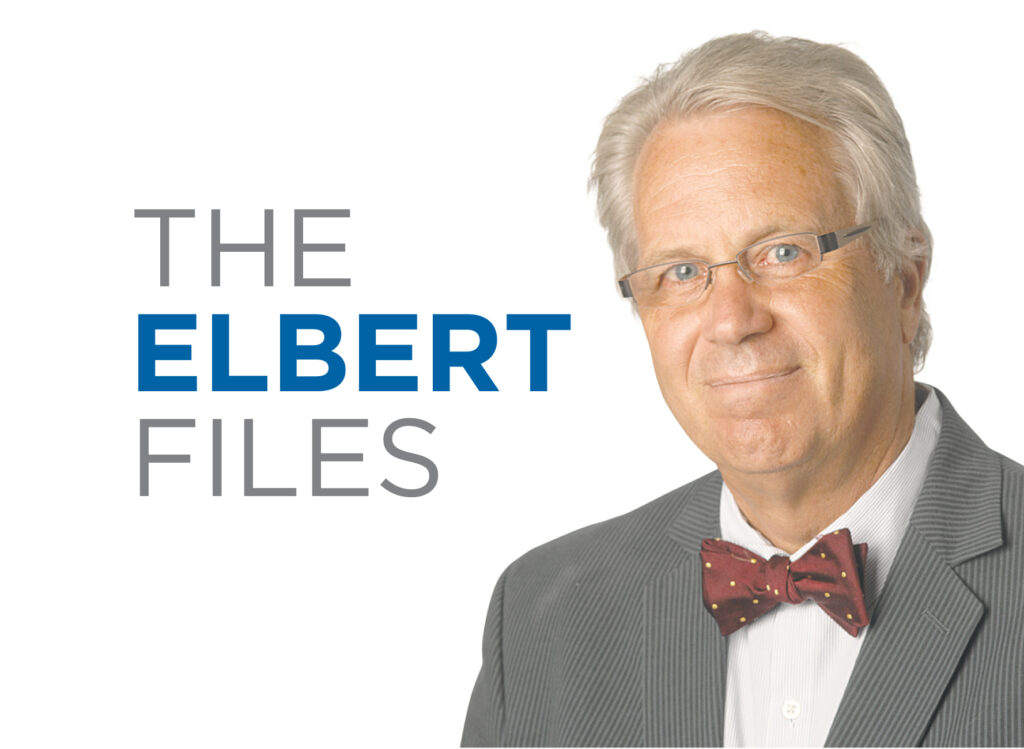The Elbert Files: Counting votes

If you’ve paid attention – and it’s hard not to this year – you’ve heard the scenarios about how this presidential election could produce a result other than the one rendered by voters.
Although most of these predictions have little chance of occurring, you’ve been hearing and reading about them because creating what-ifs is a favorite pastime of the media.
I’ve done it myself. Last January, I speculated about how Democrats might have their first brokered convention since 1952. With the large Democratic field in 2020 and a condensed primary season, I speculated that none could win on the first convention ballot.
But I did not count on a pandemic or how widely hated President Donald Trump was. Rather than risk a splintering, as occurred in 2016, this year’s gaggle of candidates bowed out, giving Joe Biden a clear shot.
Now pundits are warning about all the bad things that can happen between now and inauguration day.
That’s a good thing because, as the saying goes, “forewarned is forearmed.”
To that end, the National Task Force on Election Crises – ElectionTaskForce.org – was created earlier this year as “a diverse, cross-partisan group” of more than 50 experts, who wrote a paper explaining how the Electoral College works and what to do when it doesn’t.
The Electoral Count Act (ECA) of 1887 was passed, the task force wrote, “following the highly contested and chaotic election of 1876,” when an ad hoc congressional commission awarded 19 contested electoral votes to Republican Rutherford Hayes, instead of popular-vote winner Samuel Tilden, a Democrat.
While elections are mostly governed by state and local laws, the ECA sets dates and rules for choosing presidential electors, who choose the president.
The timetable is straightforward: Election Day (Nov. 3 this year) is the first Tuesday after the first Monday in November; the deadline for selecting electors who will actually vote in the Electoral College is five weeks later (Dec. 8); governors must certify who electors are by Dec. 14, which is the day electors meet in their respective states and cast ballots for president and vice president.
The rules for resolving difficulties are more complicated. In fact, the task force warns: “The statue is extraordinarily complex and has been described as ‘almost unintelligible.’ ”
If the 1876 scenario occurs again with competing groups of electors claiming to represent the same state, the complexity of the ECA rules, along with the fact that they’ve never been tested, ensures a court battle.
A more likely problem is a repeat of what happened in 2000, when the question was not which electors to recognize but which ballots cast by Florida voters should count.
The decision that year by the U.S. Supreme Court was fortunately ratified by Democrat Al Gore, who conceded the election to Republican George W. Bush.
Another possibility is a tie in the Electoral College, although the mathematical chances of that happening are small.
But if a tie did occur, the U.S. House of Representatives would choose the next president with each state delegation casting one vote.
Such a scenario gives new significance to the composition of Iowa’s congressional delegation. That delegation is now composed of three Democrats and one Republican, which would produce one vote for the Democratic presidential candidate.
But that can change after the Nov. 3 election.
Any configuration is possible after the election, but the most likely change involves Iowa’s 2nd District in southeast Iowa, which is held by retiring Democrat Dave Loebsack.
If Republican Mariannette Miller-Meeks wins Loebsack’s seat and the party affiliation of Iowa’s other three seats is unchanged, Iowa’s congressional delegation would have a 2-2 partisan split, which creates a problem not covered by the ECA.





